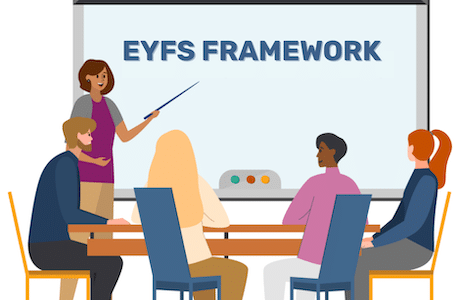Guest Author: Jon Trew
In 1881 Lord Shaftsbury was solicited for his support to introduce legislation to protect children from abuse in the home. This Victorian philanthropist had spent his entire life trying to end the exploitation of children in the workplace. He is best remembered for preventing children working in mines and climbing chimneys as sweeps. However, the great man wrote back saying “The evils you state are enormous and indisputable, but they are of so private, internal and domestic a nature as to be beyond the reach of legislation.” The idea of interfering in family life was beyond the imagination of even a great humanitarian like Shaftbury. Fortunately, times have changed and beginning in 1889 with the passing of the historic Prevention of Cruelty to Children Act and many other acts following it, children were gradually given more protection under the law in their own homes.
Today we have turned full circle and have begun to realise that children also face many forms of exploitation outside the family home. This may include situations where children are manipulated, coerced or deceived into engaging in activities that harm them physically, emotionally or psychologically, for the benefit of others.
Child exploitation can be divided into four areas:
1. Child Sexual Exploitation (CSE): Child Sexual Exploitation is a serious form of abuse. The NSPCC defines CSE as occurring when abusers use power, intimidation, or deceit to force or entice a child into sexual activities, often in exchange for money, drugs, affection, or simply just a place to stay. These relationships may initially appear consensual due to the perpetrator’s grooming techniques, but they are inherently abusive and exploitative.
This type of abuse came to public notice recently as a result of the Rotherham child sexual exploitation scandal. One report estimated that 1,400 girls were abused by “grooming gangs” between 1997 and 2013. Online platforms have amplified the reach of predators, making grooming and exploitation even more accessible.
2. Child Criminal Exploitation (CCE): CCE are activities where children are coerced or groomed into criminal activities such as drug trafficking, theft or gang-related activities. This is often referred to as county lines, where children are used to transport drugs from urban centres like London, Manchester and Liverpool to surrounding rural or suburban areas.
Exploiters often use threats, violence or emotional manipulation to control these children and young people. However, it can include other types of criminality such as shop lifting gangs and other types of offences. Criminal gangs often recruit younger children because of the lighter punishment they may receive if caught compared to an adult gang member.
3. Child Political Exploitation and Radicalisation: Children may be groomed into adopting extremist views, sometimes without fully understanding their implications, leading to potential involvement in illegal activities, acts of violence or terrorism.
According to the UK government’s updated definition of extremism, it can be understood as the promotion or advancement of an ideology based on violence, hatred or intolerance, that aims to negate or destroy the fundamental rights and freedoms of others. It may also attempt to undermine, overturn or replace the government’s system of liberal parliamentary democracy and democratic rights. The UK government has attempted to address the challenges of child radicalisation through programs like Prevent, which aim to identify intervene and divert young people away from this path.
4. Child Trafficking and Forced Labour (Economic Exploitation): This type of exploitation involves forcing children to work in conditions that are harmful, unsafe and violate their rights. This typically includes children trafficked into a country or unaccompanied child asylum seekers and refugees, often used in forced labour, domestic servitude or sometimes tending criminal enterprises such as cannabis farms.
The Modern Slavery Act 2015 seeks to combat this form of exploitation through criminal prosecution of perpetrators and protection for victims, including children.
There may also be considerable overlap between these categories, for instance girls who become radicalised and then sexually exploited by the extremists who recruited them.
Challenges in Addressing Child Exploitation
Despite the best efforts of the government, law enforcement and other organisations, many challenges persist in safeguarding children from exploitation. These include:
Hidden Nature of Exploitation: Many cases go undetected due to the covert tactics of perpetrators and the victims’ reluctance to disclose their experiences. Fear, shame or loyalty to the exploiter often silences children. Researchers into online grooming based at Swansea university identified secrecy as one of the key stages in the process of online grooming.
Misunderstanding of the Victims: Often the grooming process starts with a courtship phase. This may include flattery and compliments. The victim may be given gifts of clothes, drugs, alcohol a new mobile phone or a place to stay. As the relationship changes the process may become increasingly controlling coercive and sometimes violent. Furthermore, child victims of abuse are sometimes misidentified as the cause of the problem and treated as criminals instead of the victims of abuse, preventing adequate support and other potential victims from coming forward.
Social Media and Messaging Apps: The rise of social media and encrypted messaging apps has created new avenues for abuser to reach and exploit children. Technology has enabled perpetrators to potentially groom multiple victims simultaneously, often across international borders, with full anonymity. As the pace of new technology ever increases, safeguarding measures and policies must also keep up with the latest threats and developments.
How Schools Can Help Prevent Child Exploitation
Identifying Warning Signs of Child Exploitation
Exploitation does not always fit a single profile, and the signs can vary depending on the type of exploitation and the child’s circumstances.
All staff working with children must be trained to recognise the signs of child exploitation, which are often subtle and easily overlooked. These signs can include:
- Behavioural changes: Increased and obsessive secrecy, sudden changes in friendship groups, going missing overnight or aggression.
- Physical indicators: Unexplained injuries, frequent absences or tiredness.
- Material signs: Possession of expensive items phones, trainers or large sums of money without a clear source.
- Monitoring Attendance and Behaviour Patterns Poor attendance, frequent unexplained absences or truancy are red flags for exploitation. Similarly, changes in academic performance or social interactions can provide valuable insights into a child’s well-being.
Training staff to understand what might be going on in the child’s life can make them more sympathetic. Fostering a safe and sympathetic environment can also mean that the child is more likely to disclose the nature of the abuse to trusted members of staff. Teachers and staff who build trusting relationships with pupils are more likely to be confided in.
Raising Awareness Among Pupils
Schools and other settings can help prevent exploitation by teaching children about the risks and realities of exploitation. Educating children on relationships and sex education can empower students to identify red flags in relationships, such as grooming, coercion and manipulation. Given the prevalence of online grooming, educating pupils about safe online behaviours is critical. Schools can play an important role in fostering resilience by promoting self-esteem and teaching decision-making skills, enabling children to resist exploitation.
Engaging with Families and the Wider Community
Schools do not work in a vacuum when responding to exploitation. Collaboration with external agencies such as the police, the local council and health services is vital. Schools can also work to prevent exploitation by engaging with families.
Leveraging Software
Safeguarding software like CPOMS StudentSafe can be instrumental in identifying, recording and addressing the potential signs of all forms of child exploitation. With powerful reporting tools, customisable categories of concern and the capability to record a full chronology of incidents for every child in your setting, StudentSafe is the ideal solution to enhance your safeguarding processes.
The unique challenges involved in identifying and preventing child exploitation require a collaborative approach and effective information sharing amongst education settings and local authorities. With CPOMS Engage local authorities, schools and other settings can effectively be linked together, sharing essential safeguarding information quickly and securely to improve outcomes for all children. The CPOMS Share Contract provides full control over what information is shared with each party, creating a seamless, secure transfer of pupil information to ensure no child slips through the gaps.
To learn more about how StudentSafe and Engage can help your setting monitor the signs of child exploitation, book a free demo today.




